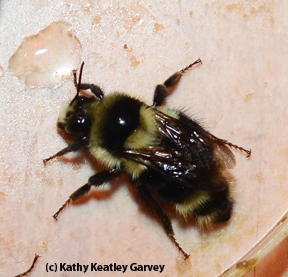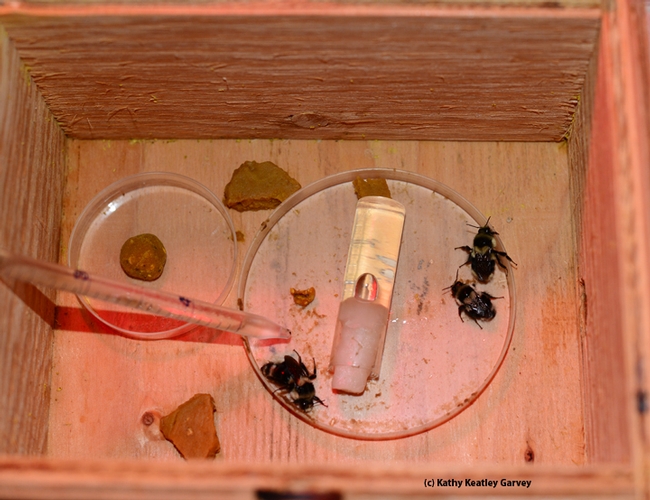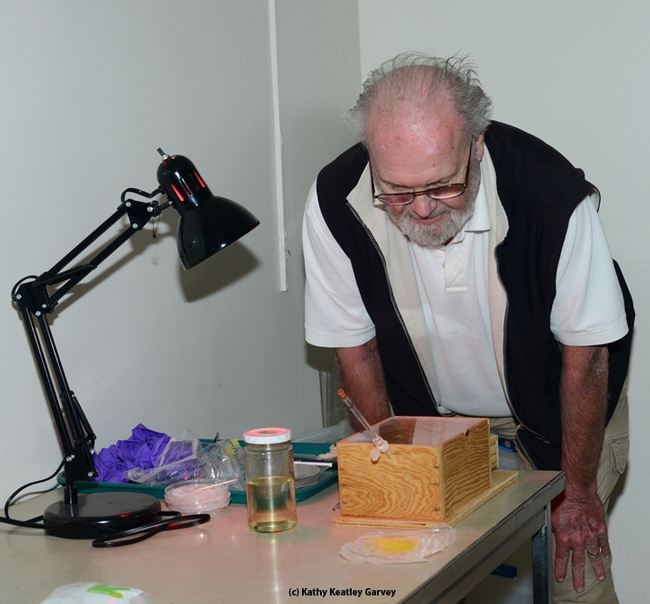
The three queen bumble bees (Bombus melanopygus) we found buzzing around our porch light the night of Jan. 9 are still very much alive.
Who would have "thunk?"
Native pollinator specialist Robbin Thorp, emeritus professor of entomology at the University of California, Davis, is caring for them at the Harry H. Laidlaw Jr. Honey Bee Research Facility on Bee Biology Road.
Thorp, who officially retired in 1994, maintains an active research and bee monitoring/identification program based as the Laidlaw facility. He recently co-authored a book on Bumble Bees of North America: An identification Guide (Princeton University Press), to be released in March.
So yesterday photographer/artist Allan Jones of Davis and I checked out "The Lovely Ladies at the Laidlaw." Yes, they're very much alive.
But it sure was strange on Jan. 9 to see them as as night fliers, or porch-light bumble bees. I figured they were parasitized. I figured that a florid fly, Apocephalus borealis, which lays its eggs in such insects as bumble bees, wasps and honey bees, had nailed them. I figured they'd be goners within a few days.
I hope I'm wrong.
It's long been known that Apocephalus borealis infests bumble bees. However, Professor John Hafernik of San Francisco State University and his colleagues caused quite a media stir when they discovered that this fly infests honey bees as well. They published their work, "A New Threat to Honey Bees, the Parasitic Phorid Fly, Apocephalus borealis," in PLOS ONE back in January 2012. They revealed that the parasitized, disoriented honey bees (which they nicknamed "Zombies" or "ZomBees") leave their hives at night and head for the lights.
"After being parasitized by the fly, the bees abandon their hives in what is literally a flight of the living dead to congregate near lights," said Andrew Core of the Hafernik lab. 'When we observed the bees for some time—the ones that were alive—we found that they walked around in circles, often with no sense of direction."
What's next?
Fingers crossed that the three queen bumble bees aren't parasitized. Fingers crossed that they will survive. Fingers crossed that they will continue to be "The Lovely Ladies at the Laidlaw."
Attached Images:

